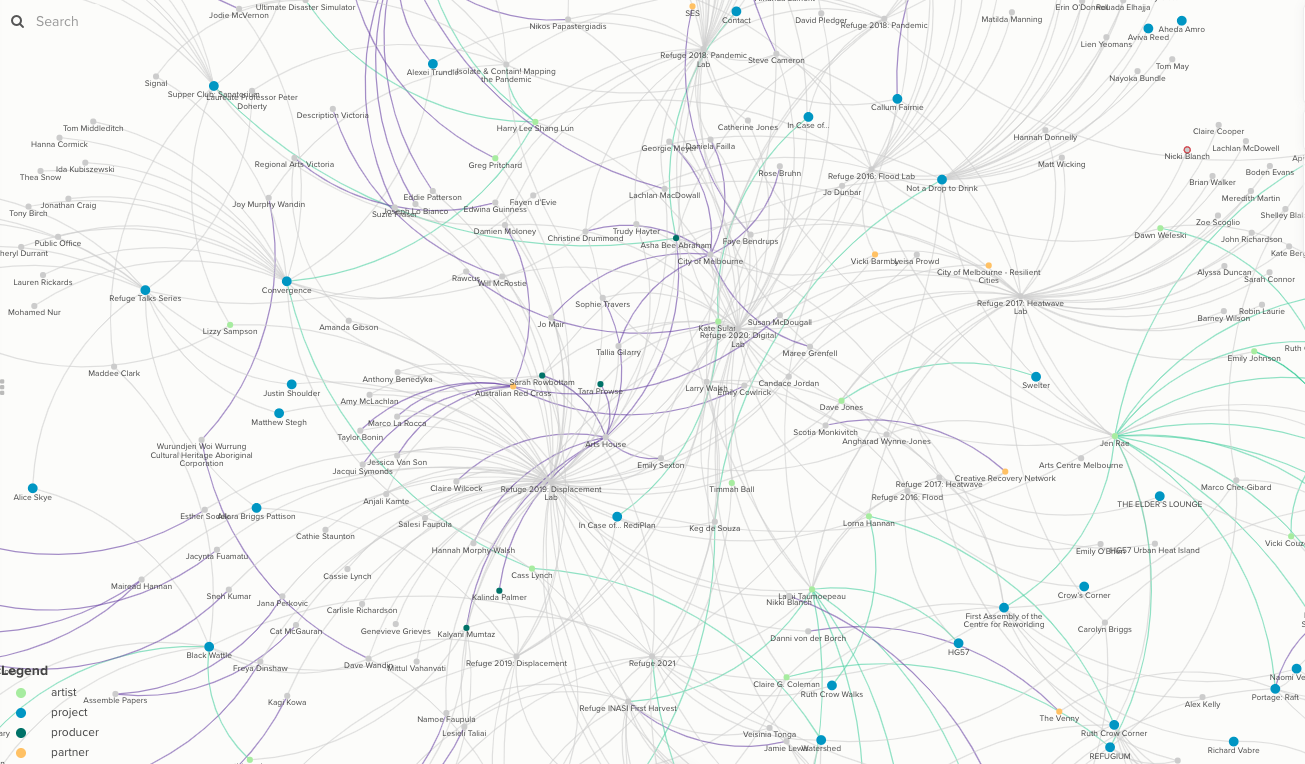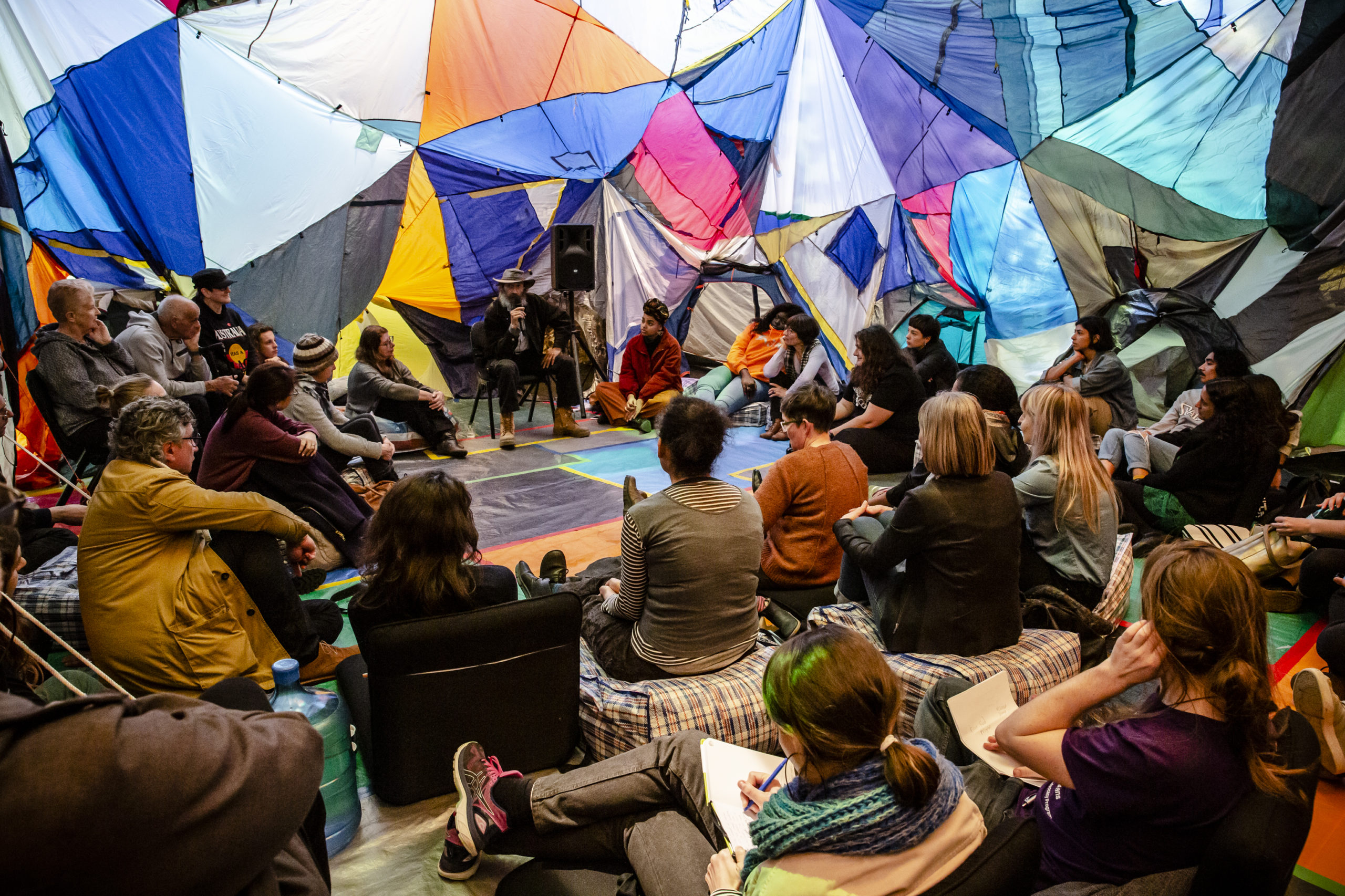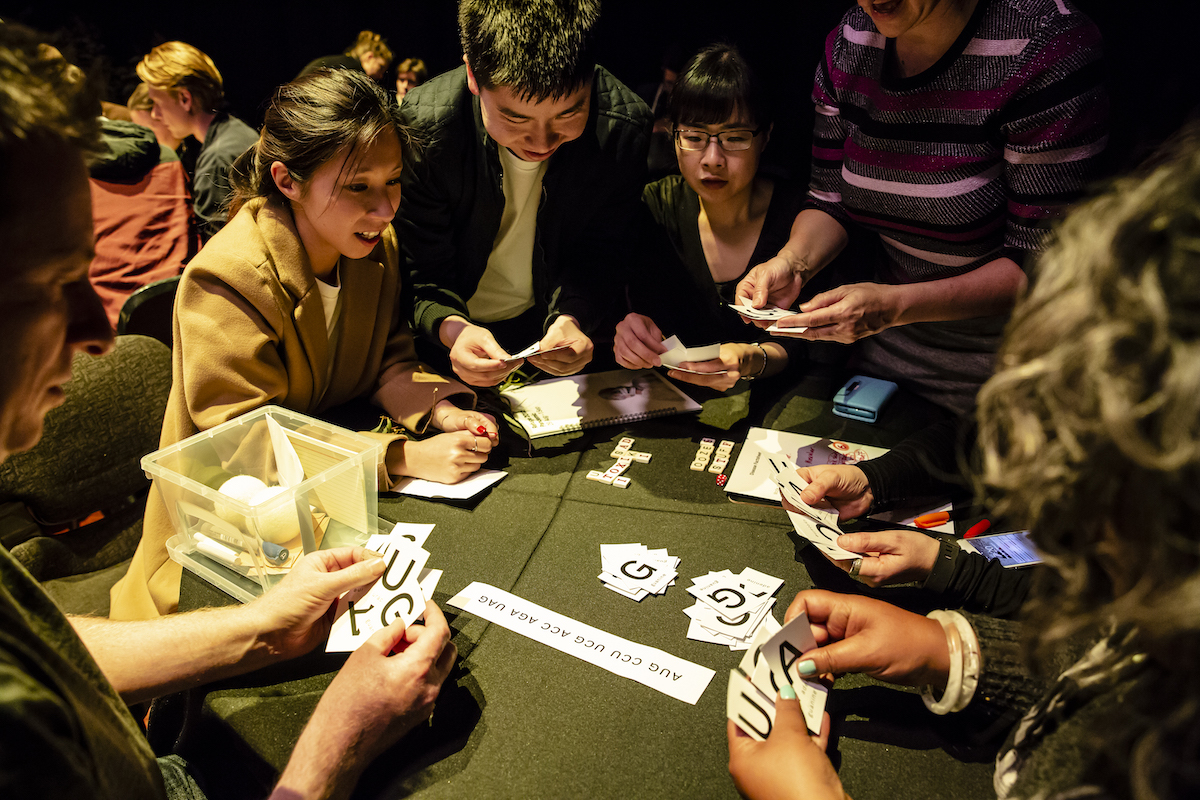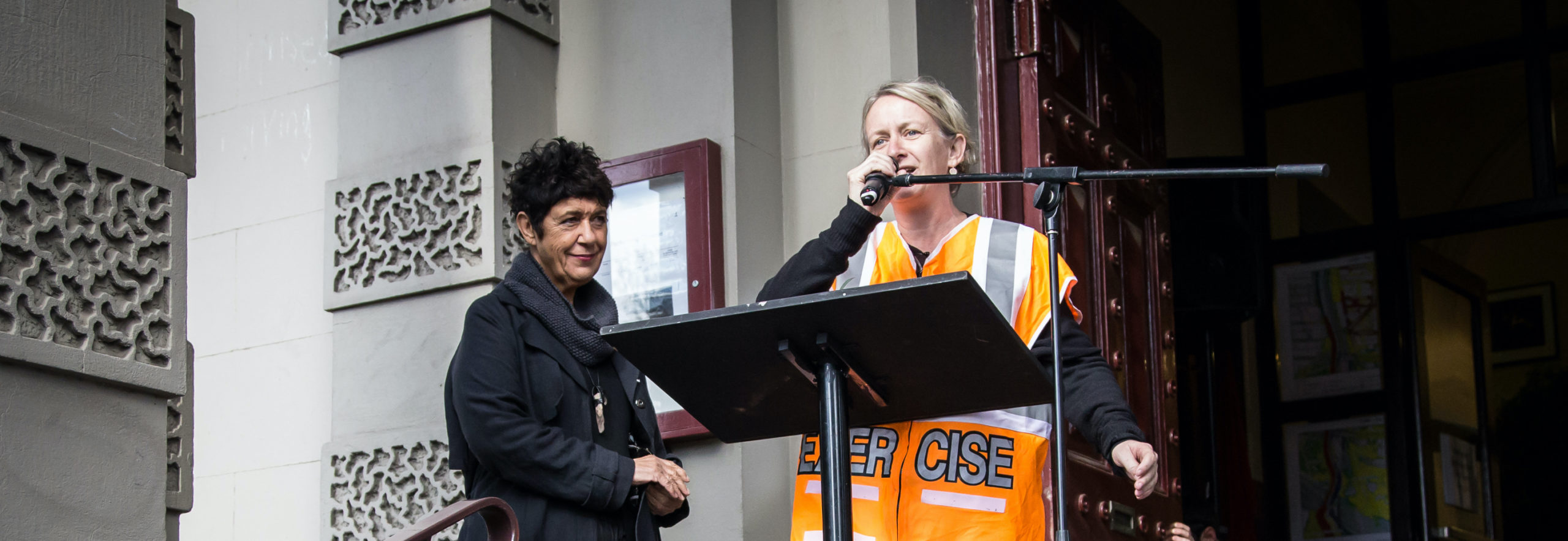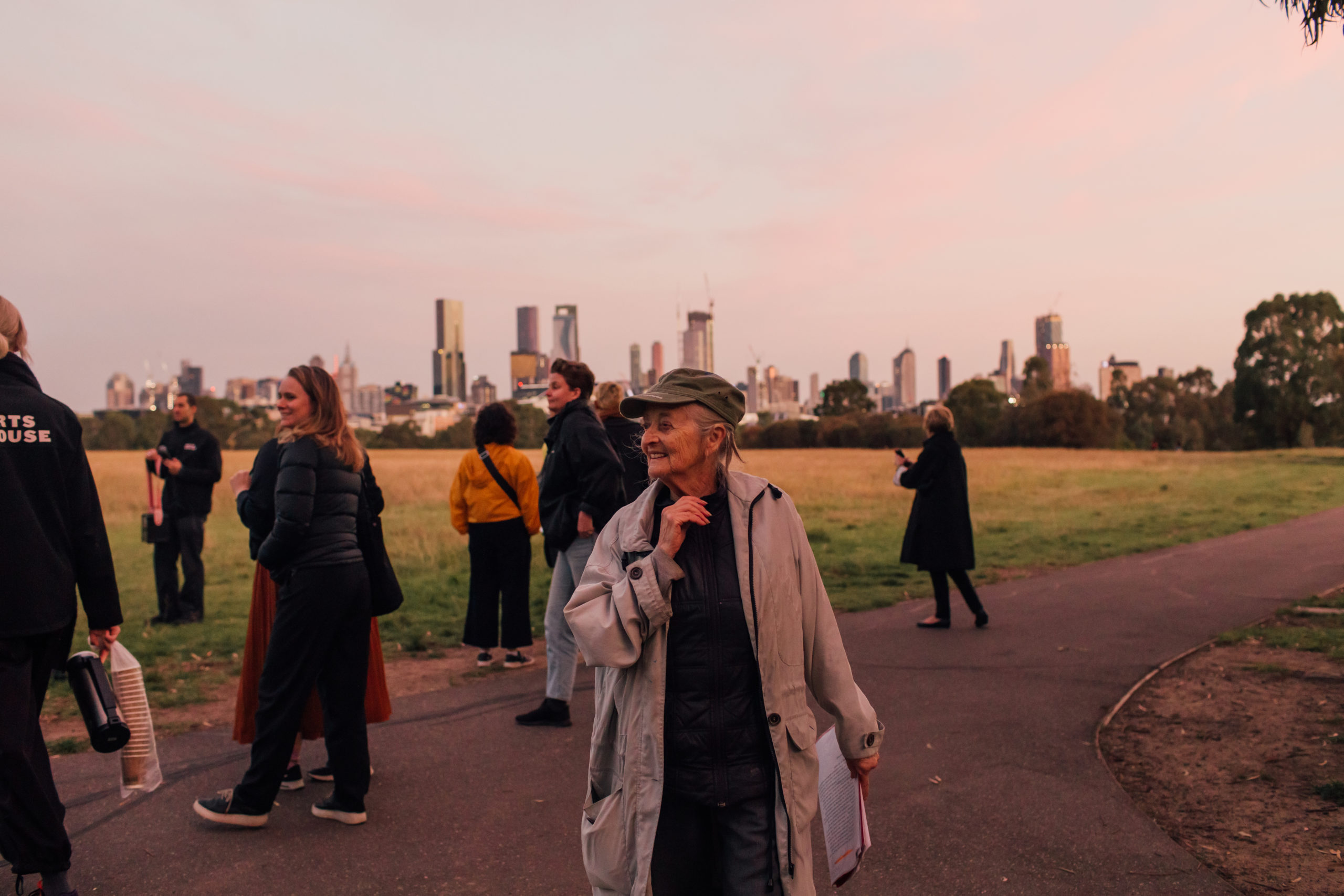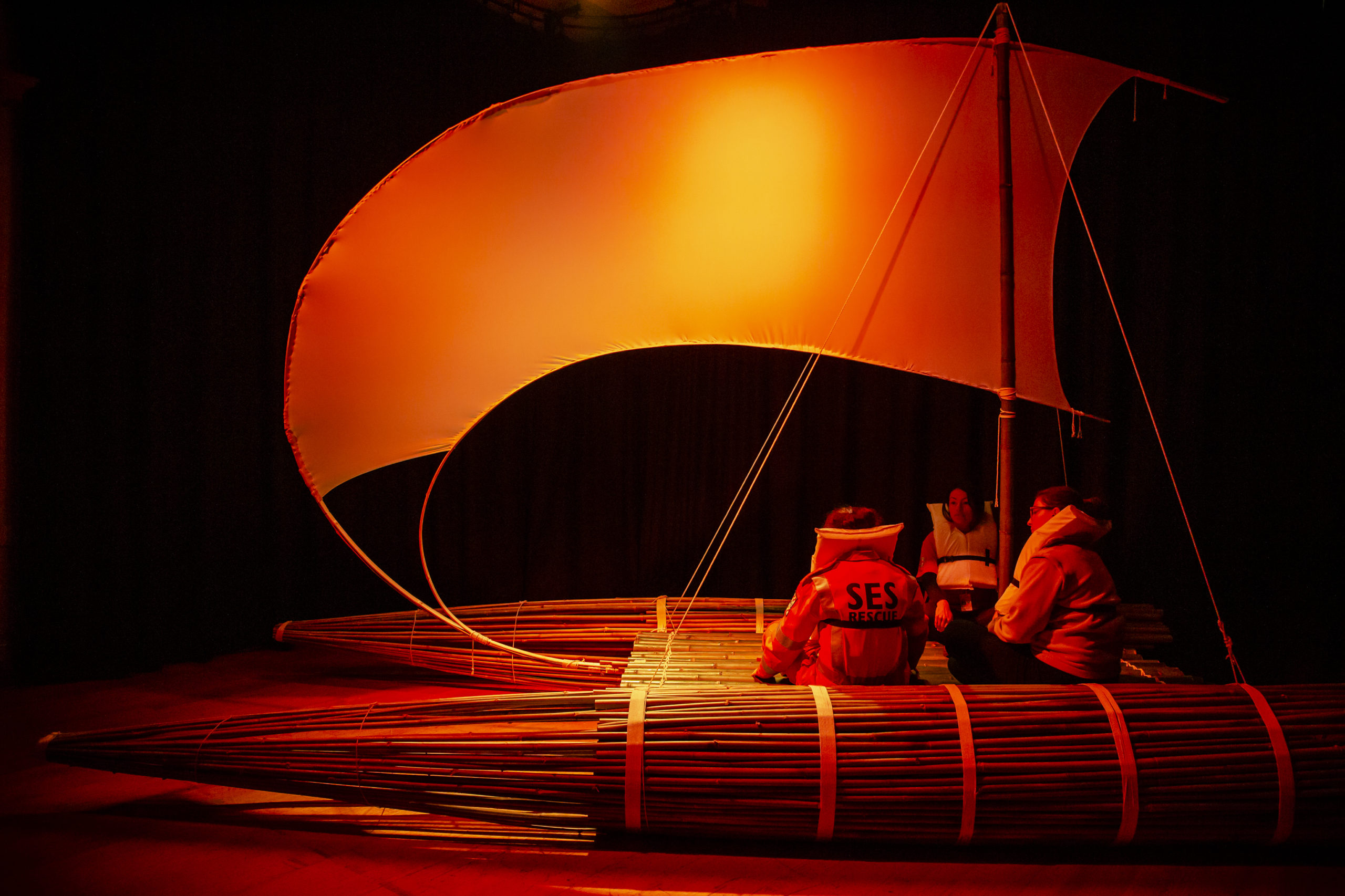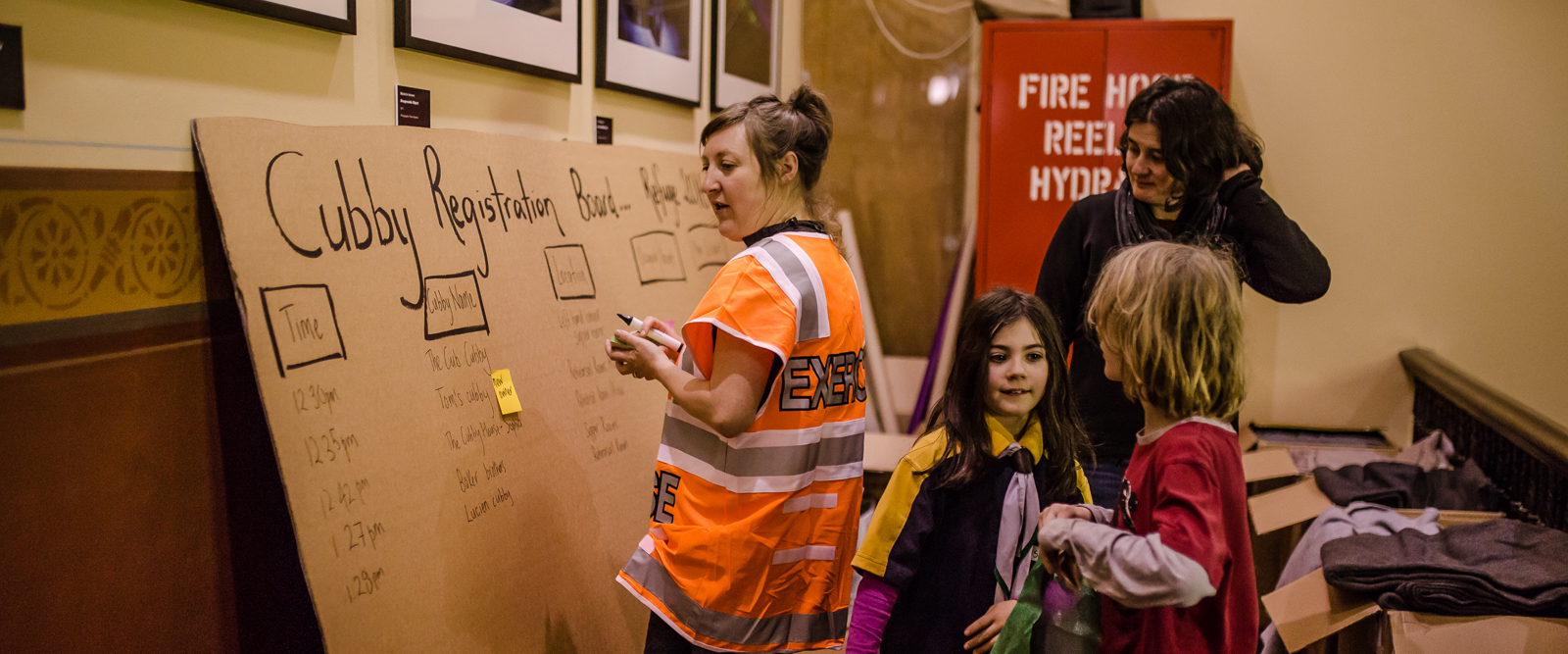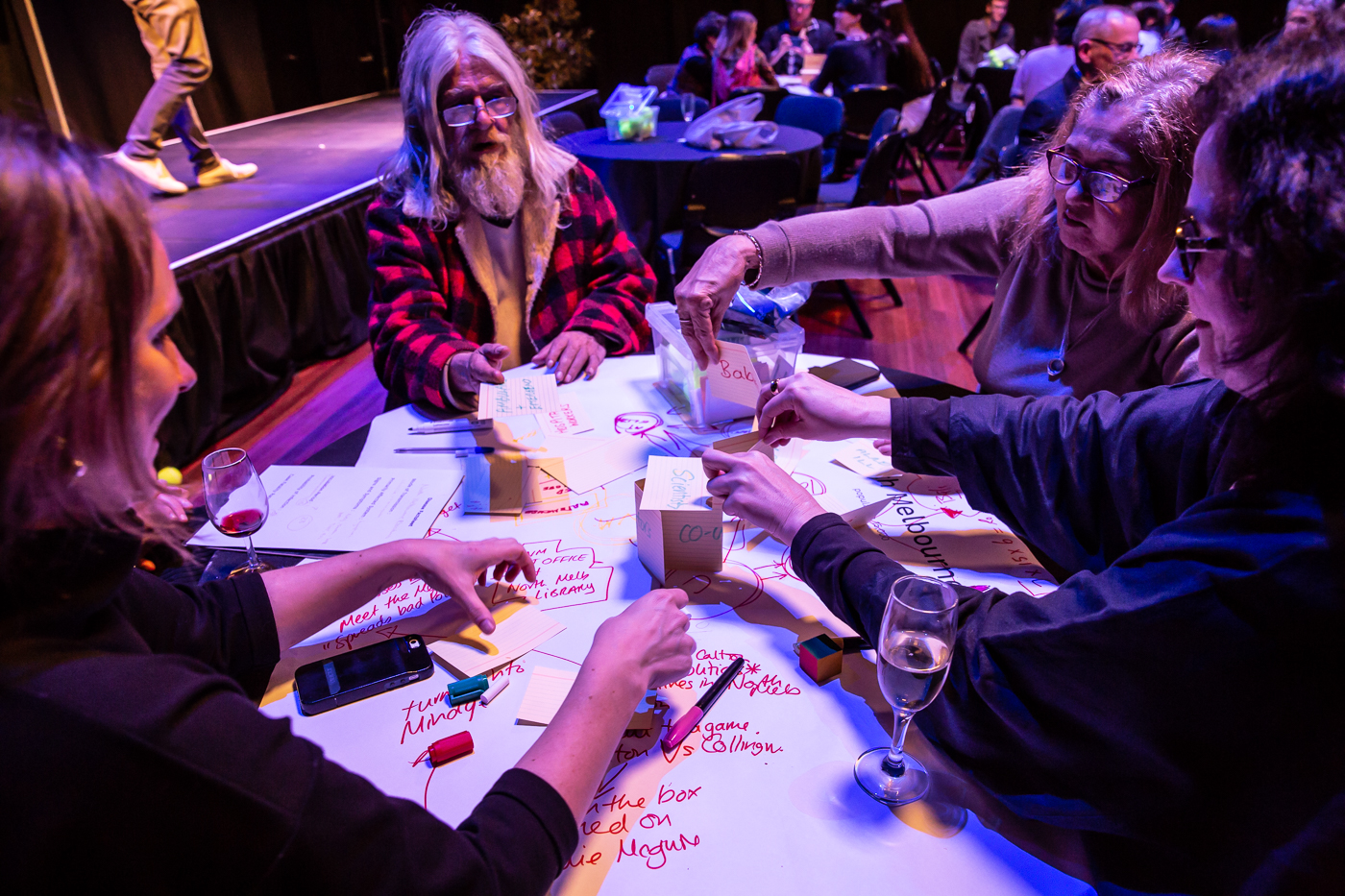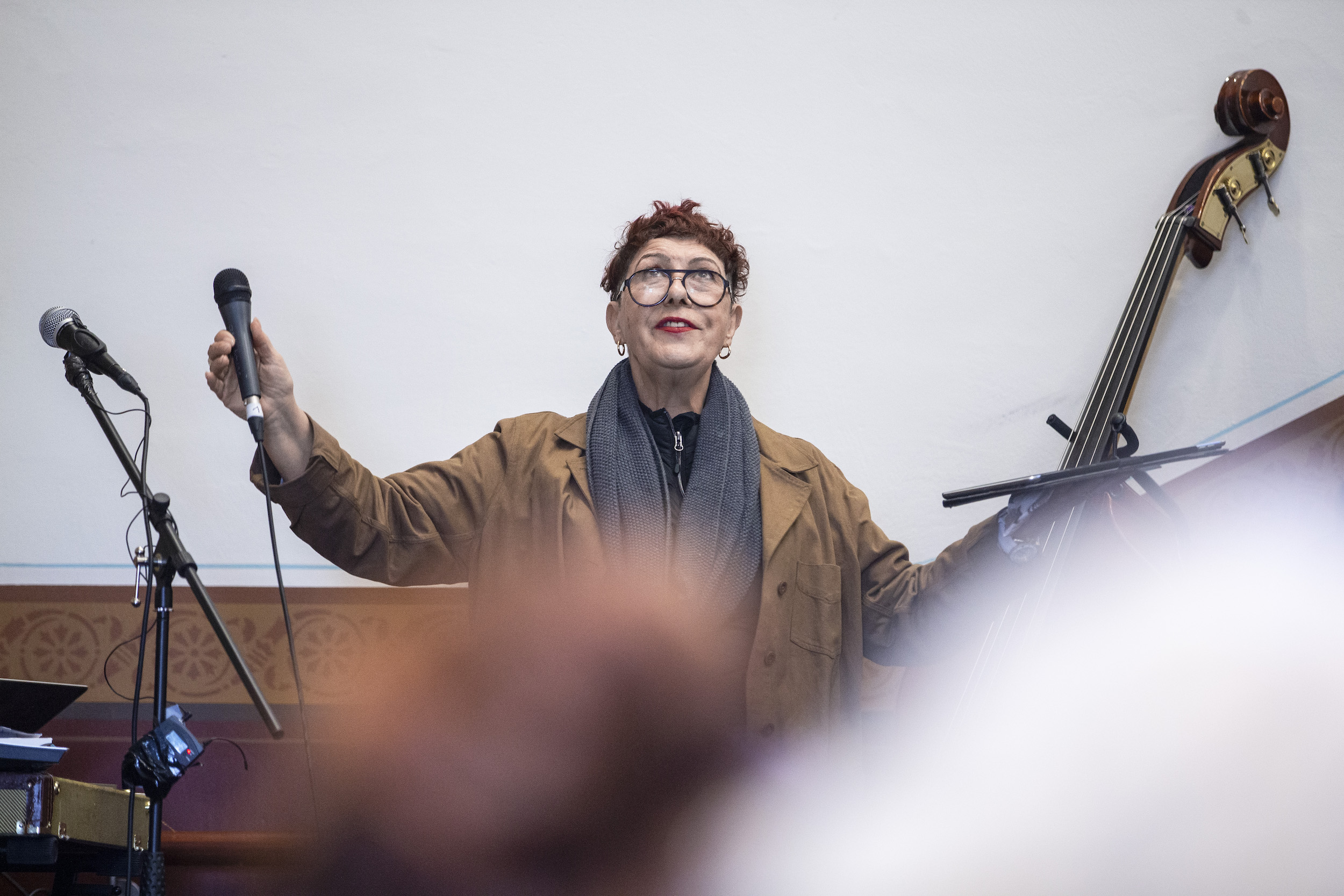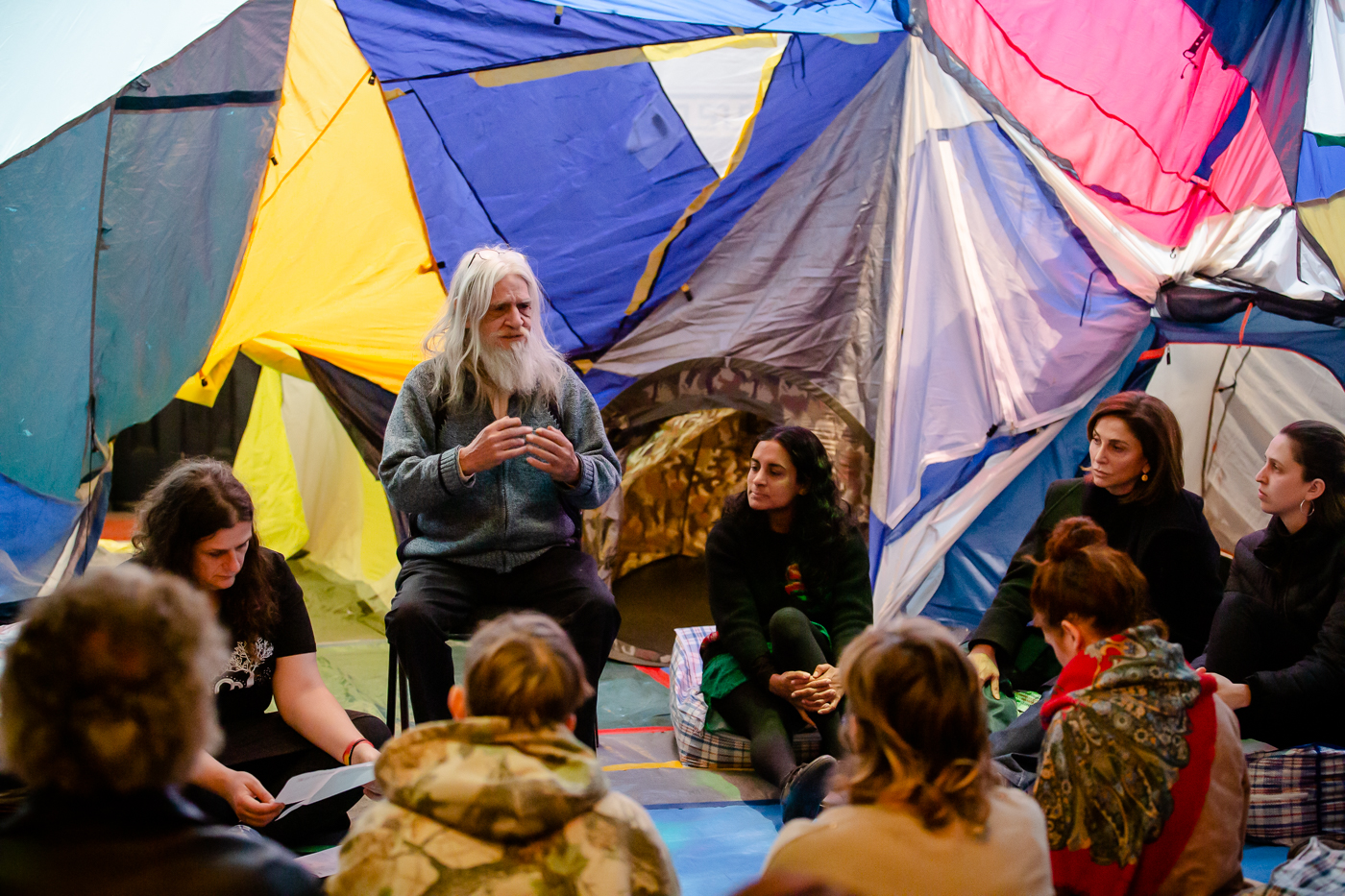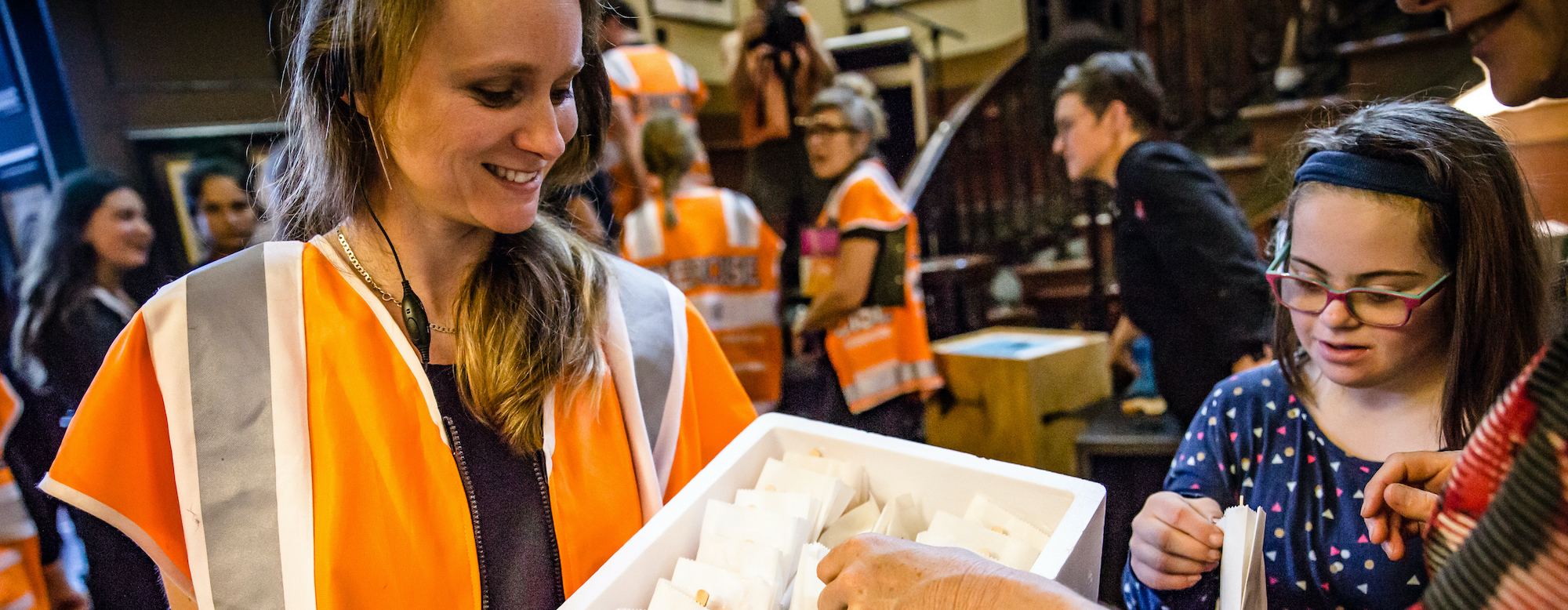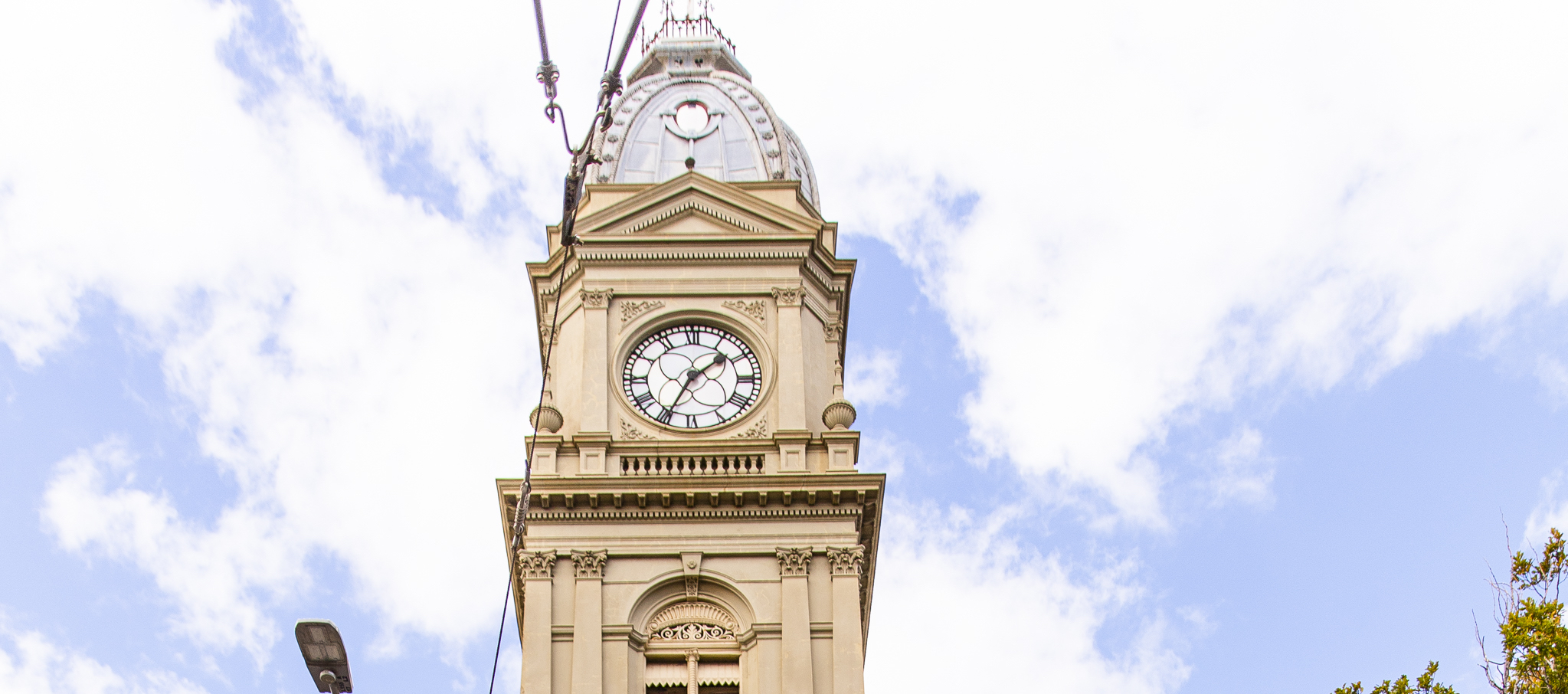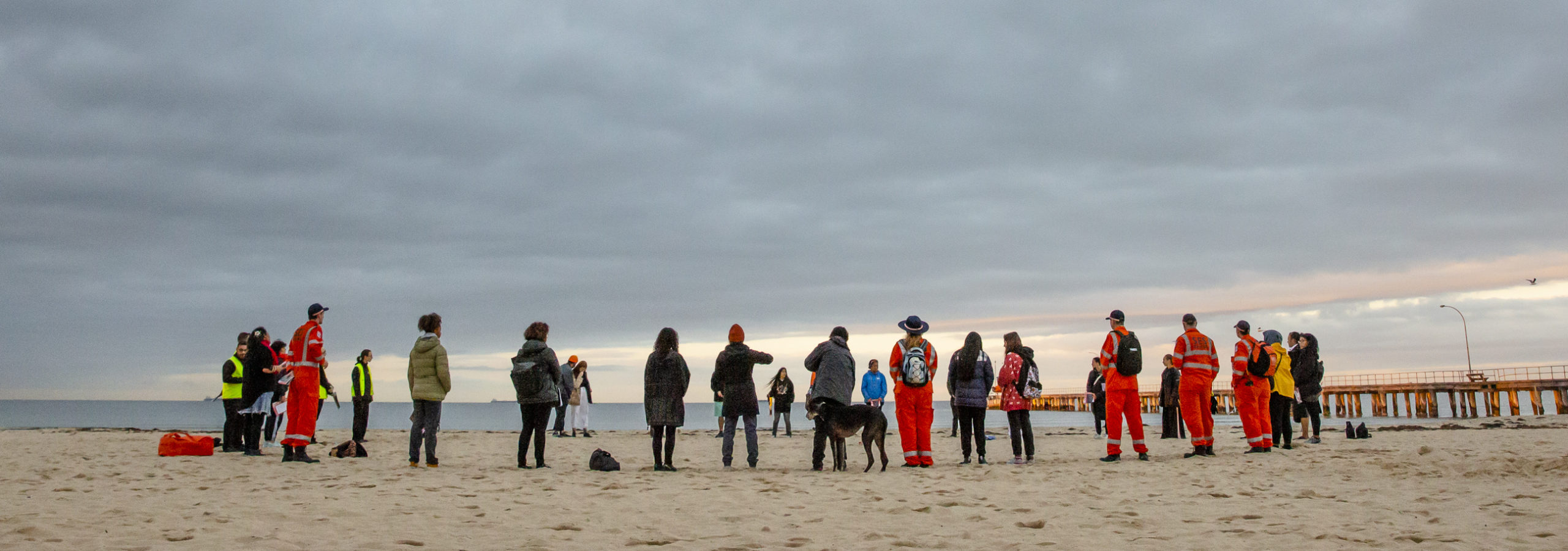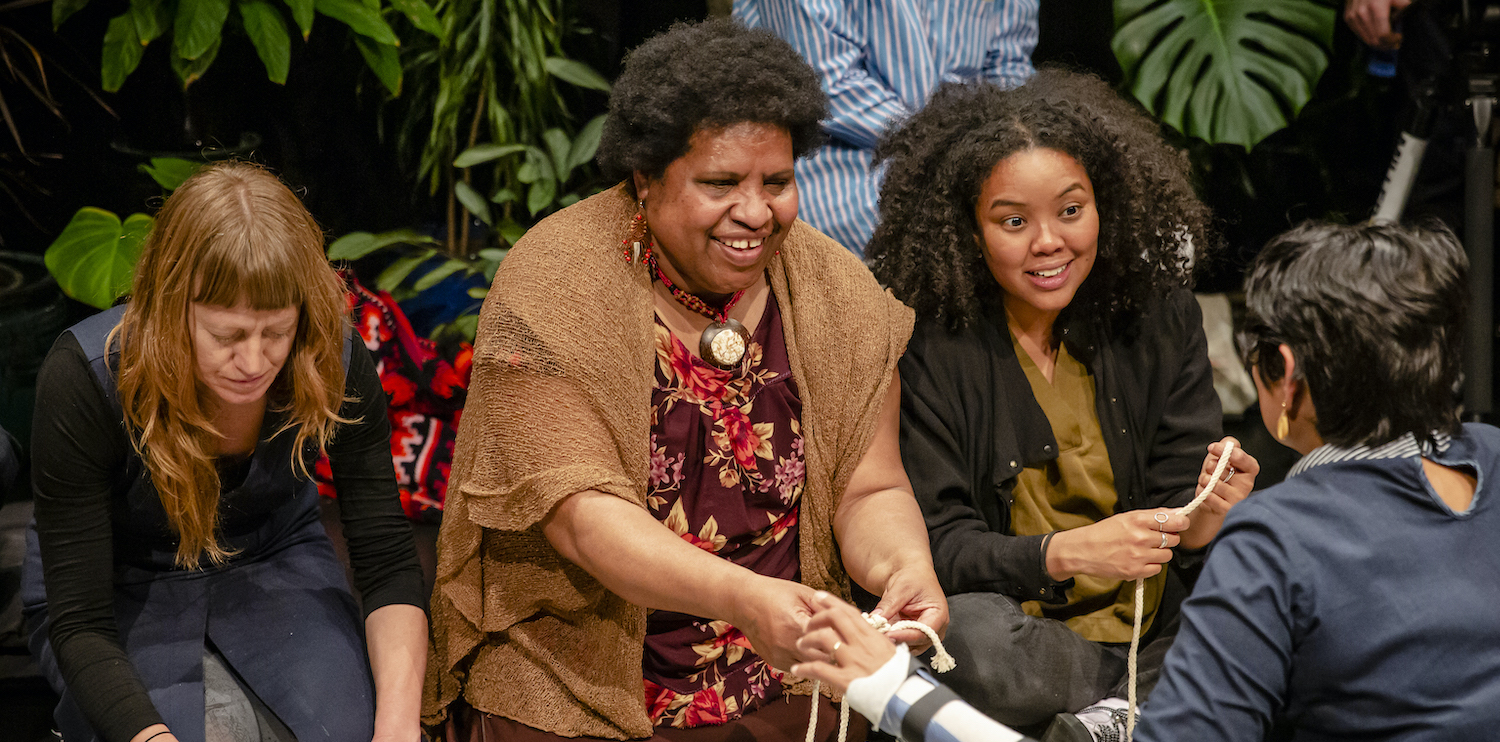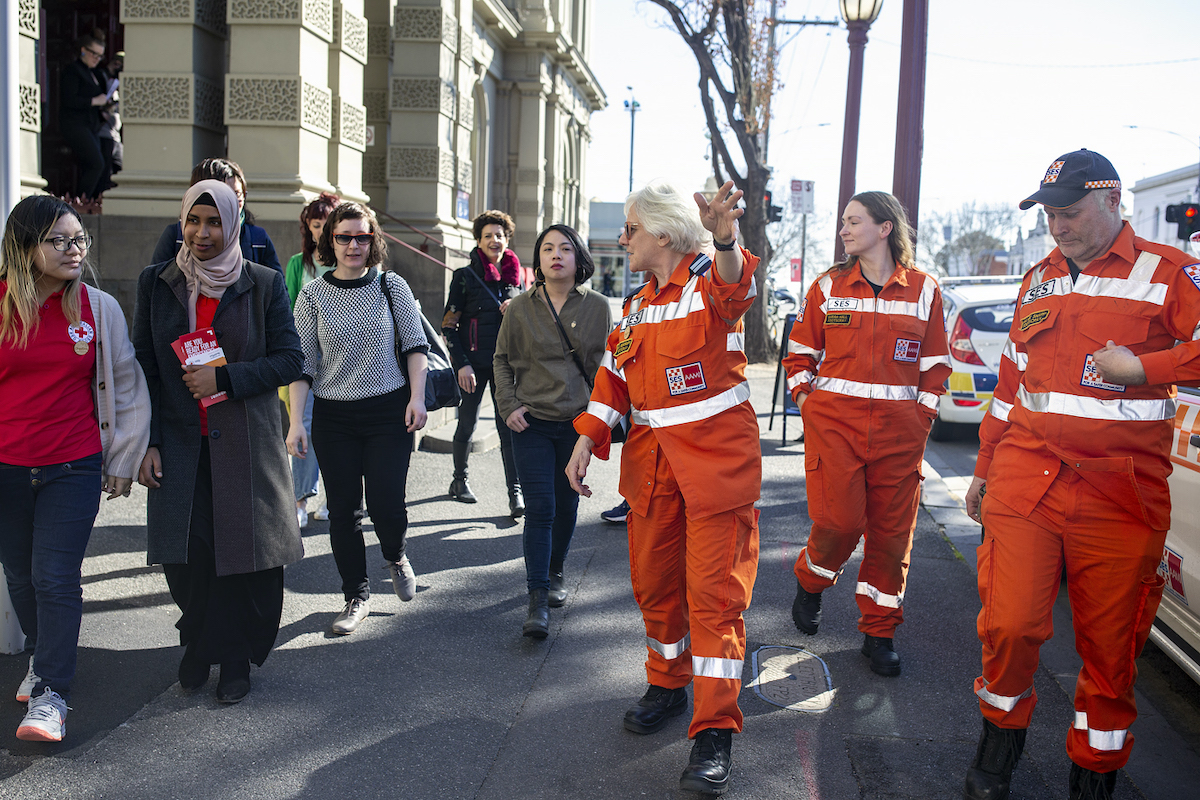Convergences
Cass Lynch
This piece is from the collection, In The Time of Refuge.
We—Homo sapiens, or humans—appeared as a distinct hominid species approximately 200,000 years ago. We emerged in a geological epoch called the Pleistocene, a time of glacial and interglacial periods; where the Earth oscillates between ice ages and warm times. Humans appear at the end of a warm period, and most of our history has been that of a cooling world. We developed tools, pottery, hunting, art, and language against a backdrop of lowering sea levels, expanding deserts, shrinking rainfall and dropping temperatures. Humans spread around the world, taking advantage of low seas and exposed land bridges to move from the African continent into Eurasia, and to reach other continents like Australia, and North and South America. Humans arrived on the Australian continent at least 60,000 years ago.
The climate continued to cool, and 22,000 years ago the Earth entered the Ice Age: the coldest period in the 150,000 year interglacial cycle. Ice sheets covered North America, Britain, Northern Europe and Russia. The sea level was 120 metres lower than it is today, Australia was connected to Papua New Guinea and Tasmania, New Zealand was one long continuous mountainous island. The worst of the freeze lasted 4,000 years, and humans around the world fled south from their newly colonised northern lands as the ice spread. Ice sheets didn’t cover Australia though, and the humans who settled here didn’t have to leave. The Indigenous people of Australia suffered through 10,000 years of cold and drought, watching the megafauna die out, but kept the fires burning, and survived.
It takes a long time for the Earth to cool down to an Ice Age, but when conditions change, the transformation from cold to warm is rapid. 18,000 years ago the cold cycle was done, and the rapid warming began. The climate warmed by 8 degrees celsius, and from 15,000 years ago to 7,000 years ago, the sea level rose by 120m. The land bridges disappeared, Australia lost 23 percent of its landmass to rising seas, and humans all around the world faced a huge climate shift. The sea level didn’t rise uniformly in those 8,000 years, and during some periods Australia was losing 3m of coastline a year. It is theorised that a large negotiation went on all around the coastal areas of this continent, of saltwater communities negotiating with inland mob to migrate their families inward and to higher ground.
The world has transformed in the time that humans have been around. We live in a drowned world compared to our ancestors. Indigenous values and ideas around land care were forged in this period of upheaval, of watching Country disappear, along with burial sites, ceremonial places and hunting ground. Mob knew the value of having dry land that sustains you, and the value of diplomacy and interconnectedness with neighbouring communities. Because there were no major ice sheets in Australia and the continent is so vast, Indigenous people here waited out the climate shift, learning how to co-exist in the new conditions, learning how to care for Country in this new inundated world. The Ice Age and the rise in sea level that followed it are imprinted on Indigenous oral storytelling; many communities tell the story of The Cold Times and the Angry Ocean that rose and took Country many grandfathers ago.
There have been extreme climate changes in the past that have been catastrophic to life. The five mass extinction events of Earth’s history were caused by catastrophic climate change, photosynthesising bacteria, volcanic activity and meteorite impacts. By comparison, the glacial-interglacial of the Pleistocene and now Holocene period are relatively gentle climate shifts, caused by rhythmic variations in Earth’s orbit. The cooling down to the last ice age caused the megafauna to die off, but humans have just hung on.
Worldwide humans enjoyed the warmer climate of the current geologic era, the Holocene, and our populations expanded and new technologies were developed. Europe has some of the most fertile soils on the planet, and productive agriculture led to large, concentrated populations. It got competitive for land and resources, and humans in Europe did something that Indigenous people in Australia didn’t when faced with a land and food shortage. 500 years ago, a select few European peoples became colonising nations. They took control of the land, plants, animals and human bodies of other communities, and exploited them for their particular benefit.
233 years ago, the humans who call themselves British arrived and extended this colonial methodology on the Australian continent. They commenced to massacre, displace, enslave and steal Indigenous people, and clear land, dig up minerals and extract large amounts of water for European agriculture. The British didn’t have memory of the last Ice Age or the rise in sea level that followed it. Their memory of the rise in sea was lost in time; as the European peoples conquered each other their cultures and languages mixed. The notion that the climate could change or that land could be lost to sea level had been forgotten.
European colonial practice transformed into capitalism: an abstract money-based system of trade reliant on global fossil fuel burning, proliferation of consumerable products, and livestock husbandry. This has produced huge amounts of carbon emissions, methane gas, and pollution, along with mass clearing of trees and shrinking of waterways. These practices became the norm of world trade, and those who can’t engage suffer marginalisation and poverty in the shadow of powerful, capitalist nations.
Ice cores taken from the Arctic indicate that we should be entering a cooling period. The temperatures are supposed to be going down, gradually cooling for another 150,000 years, down to another Ice Age. But the warmest 50 years of the last 2000 were the last 50, with increases each decade. Human activity is unnaturally warming the climate, and we are pushing temperatures up higher than we have ever experienced. We are heading into unknown territory, unofficially named The Anthropocene: the era of human-made climate.
The last super warm period was the Eocene, 50 million years ago, when a shallow ocean filled with plesiosaurs covered central Australia. The Eocene was caused in part by the uplift of the Himalayas, which being capped in limestone, exposed huge amounts of calcium carbonate to react with the atmosphere and make carbon dioxide. This rapidly warmed the planet, melted all the ice at the poles, and raised sea levels higher than they had ever been. The opalised fossil remains of the plesiosaurs of Australia’s inland sea sit out in the deserts north of Adelaide.
To call this era The Anthropocene is to pin the blame of rising temperatures on all humans equally. The name suggests that as a collective, humans are responsible for the warming climate through overpopulation, rearing billions of livestock and our love of conveniences. However European colonisation has not created an equal world, and capitalism in fact requires inequality to extract profit. The vast majority of the world are not meant to benefit from capitalism, and the ones who do benefit produce the vast majority of climate pollution. We are not all in this together, and we are not all equally responsible.
Indigenous people know that bad ideas have been brought to our shores: bad for community, land, and spirit. We’ve watched bad masters take control of Country and fail us all miserably. It’s gone wrong in just 200 years, after 60,000. To survive climate change we must get specific about which beliefs and values are about survival, and which are about profit and power. Mob have the long view, we survived climate change before, and we survived colonisation. We’ve survived apocalypse twice over as a continuous culture. We have a continuity with the past that is eons older than the notion of capital and profit. We have oral storytelling of resilience in the face of climate crisis, where coming together saved us, not splintering apart. Human-made climate change is not a temporal cliff but a cultural cul-de-sac. Let Indigenous beliefs, values and knowledges re-steer the course.
Convergences (previously The Story So Far…) was originally commissioned for Refuge 2021 as part of Convergence by Harry Lee Shang Lun (PlayReactive) and is reprinted with kind permission of the author.
Header image: Harry Lee Shang Lun with SES and Australian Red Cross during Refuge 2017: Heatwave, Photo by Bryony Jackson.
Image description: Five people sit in a semicircle watching a man placing yellow toy blocks on butchers paper with the word ‘UTOPIA’ written at the top. They are surrounded by plants and behind them is a waterhole and a stage with several large salvation army boxes.
About Cass Lynch
